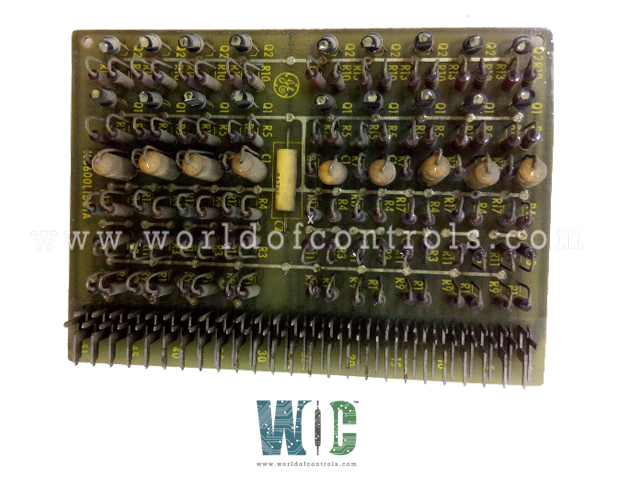
World Of Controls understands the criticality of your requirement and works towards reducing the lead time as much as possible.
IC3600LIBB1C1B - Input Buffer Circuit Board is available in stock which ships the same day.
IC3600LIBB1C1B - Input Buffer Circuit Board comes in UNUSED as well as REBUILT condition.
To avail our best deals for IC3600LIBB1C1B - Input Buffer Circuit Board, contact us and we will get back to you within 24 hours.
SPECIFICATIONS:
Part No: IC3600LIBB1C1B
Manufacturer: General Electric
Product Type: Input Buffer Circuit Board
Series: Mark II
Operating temperature: -30 to 55 ºC
Power Supply Voltage: 24 V dc
Board Size: 2.5 cm high x 8.5 cm
Weight: 0.48 kg
Availability: In Stock
Country of Origin: USA
FUNCTIONAL DESCRIPTION:
IC3600LIBB1C1B is an Input Buffer Circuit Board manufactured and designed by General Electric as part of the Mark II Series used in GE Speedtronic Control Systems. An Input Buffer Circuit Board typically refers to a printed circuit board (PCB) that is designed to handle and process incoming signals or data from external sources. This board often contains components and circuits that protect, condition, or amplify signals before they are further processed by other components or circuits on the main board. The term input buffer usually implies that this part of the circuit is responsible for managing the signals that come into the system.
Input Interface: This is where external signals are physically connected to the board, which could include connectors, jacks, or ports for various signal types, such as analog or digital.
Signal Conditioning: The board may have components like resistors, capacitors, and operational amplifiers (op-amps) to adjust the characteristics of the incoming signal. This can include filtering, amplification, and level shifting to ensure the signal is suitable for the rest of the system.
Protection Circuitry: To prevent damage from overvoltage, static discharge, or other potential hazards, protective components like diodes, transient voltage suppressors, and fuses may be included.
Buffering: Buffer circuits, often implemented with op-amps, help isolate the input from the rest of the circuit, providing impedance matching and minimizing loading effects.
Signal Routing: The board might include switches or multiplexers to route the input signals to various parts of the system as needed.
Connectivity: Depending on the application, the board might have connectors or headers for linking to other components or subsystems in the larger electronic system.
Support Components: Additional components like power regulation, ground connections, and decoupling capacitors are usually integrated to ensure proper functioning and signal integrity.
WOC has the largest stock of GE Speedtronic Control System Replacement Parts. We can also repair your faulty boards. WORLD OF CONTROLS can also supply unused and rebuilt backed-up with a warranty. Our team of experts is available round the clock to support your OEM needs. Our team of experts at WOC is happy to assist you with any of your automation requirements. For pricing and availability on any parts and repairs, kindly get in touch with our team by phone or email.
What are the common applications of input buffer circuit boards?
Input buffers are used in various applications, including audio amplifiers, data acquisition systems, sensor interfaces, and many other scenarios where signal fidelity is critical.
What is impedance matching in the context of input buffers?
Impedance matching is the process of ensuring that the input impedance of the buffer closely matches the output impedance of the source. This maximizes power transfer and minimizes signal reflections.
How do input buffer circuit boards reduce noise?
Input buffers can include features like filtering and shielding to reduce electromagnetic interference (EMI) and radio-frequency interference (RFI) that can introduce noise into the signal.